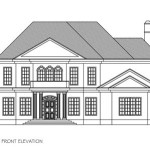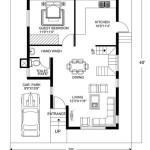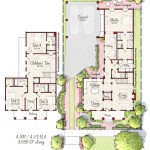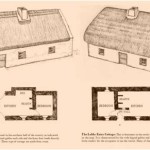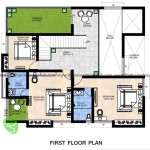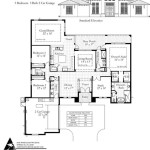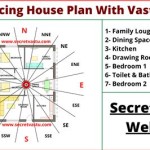Best Ranch House Plans with Basement
Ranch house plans with basements offer a compelling combination of classic single-story living with the added benefit of expanded space below grade. This article explores the advantages of this style, popular design considerations, and key features to look for when choosing a ranch house plan with a basement.
One primary advantage of a ranch house with a basement is the flexibility it provides. The main floor can accommodate daily living needs with an open-concept layout connecting the kitchen, dining, and living areas. Bedrooms and bathrooms are typically situated on this level for easy accessibility. The basement, meanwhile, can be finished to suit various purposes, such as a recreational room, home theater, guest suite, home office, or additional bedrooms. This adaptability allows homeowners to customize the space to meet their specific needs and lifestyle.
Another significant benefit is the potential for increased property value. While the initial construction cost of a basement can be higher than a slab foundation, the added square footage typically translates to a higher resale value. This is particularly true if the basement is finished to a high standard, maximizing its usability and appeal to potential buyers.
Accessibility is a hallmark of ranch-style homes. Eliminating stairs between the main living areas makes these plans ideal for individuals with mobility challenges or those planning for aging in place. While the basement does introduce stairs, the core living functions remain conveniently located on the single floor.
Energy efficiency can also be enhanced with a basement. The earth surrounding the basement provides natural insulation, helping to regulate temperatures and potentially reducing heating and cooling costs. Furthermore, basements offer a safe haven during severe weather events.
When selecting a ranch house plan with a basement, several design considerations are essential. The size and layout of the basement should align with the intended use. For example, a basement intended for entertainment might prioritize a large open space, while one planned for additional bedrooms will require careful consideration of window placement and egress requirements.
Ceiling height in the basement is another critical factor. Lower ceilings can feel cramped and limit design options. Look for plans that maximize ceiling height to create a more spacious and comfortable environment.
Natural light is also highly desirable in a basement. Walk-out basements, which are partially above ground, offer excellent opportunities for incorporating windows and doors that bring in natural light and provide access to the outdoors. Even in basements that are entirely below grade, strategically placed windows and well-designed lighting plans can significantly improve the ambiance.
Moisture control is paramount in any basement. Ensure the plan incorporates proper drainage, waterproofing, and ventilation to prevent moisture-related problems like mold and mildew. A sump pump is often a necessary component for managing groundwater.
Consider the placement of utilities and mechanical systems within the basement. A well-designed plan will locate these elements efficiently to maximize usable space and minimize noise disruption to living areas.
Staircase design should be both functional and aesthetically pleasing. Consider the width, rise, and run of the stairs, as well as the location within the house, to ensure comfortable and safe access to the basement.
The exterior design of the ranch house should complement the overall aesthetic of the property. Consider the architectural style, roofing material, and siding options to create a cohesive and visually appealing home. Landscaping and outdoor living spaces can further enhance the curb appeal and functionality of the property.
Integrating the basement seamlessly with the main living areas is essential for a cohesive design. Consider how the staircase connects the two levels and whether there are opportunities for visual connections between the spaces.
Budgetary considerations are crucial throughout the planning process. Building a basement adds to the overall cost of construction. It's essential to have a realistic budget and to prioritize features based on needs and available resources. Working with an experienced architect and builder can help ensure the project stays within budget.
Local building codes and regulations will impact the design and construction of the basement. Ensure the chosen plan complies with all applicable codes and regulations, including those related to egress, ventilation, and structural integrity.
Analyzing the specific site conditions is also essential. Factors such as soil type, topography, and water table can influence the design and feasibility of a basement. A thorough site assessment is crucial before finalizing any plans.
Finally, consider the long-term maintenance requirements of the basement. Regular inspections and maintenance tasks, such as checking for leaks and ensuring proper ventilation, are essential for preserving the integrity and longevity of the space.

Ranch Style House Plans With Basement All About Floor And More

Versatile Spacious House Plans With Basements Houseplans Blog Com

Ranch Homeplans Walk Out Basement Unique House Plans Floor

3 7 Bedroom Ranch House Plan 2 4 Baths With Finished Basement Option 187 1149

Simple House Floor Plans 3 Bedroom 1 Story With Basement Home Design 1661 Sf Ranch

Don Gardner Walkout Basement House Plans Blog Eplans Com

Walkout Basement House Plans With Photos From Don Gardner Houseplans Blog Com

House Plans With Basements Dfd Blog

3 7 Bedroom Ranch House Plan 2 4 Baths With Finished Basement Option 187 1149

Silverbell Ranch House Plan Farmhouse Archival Designs


